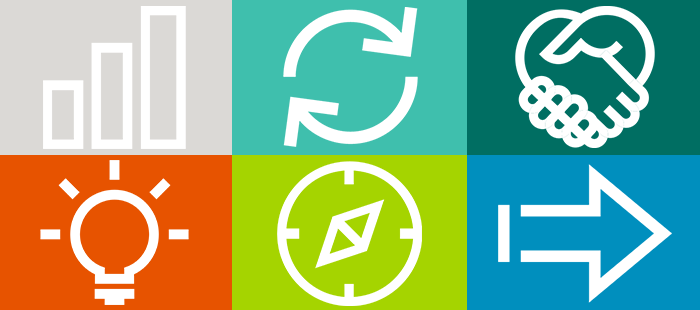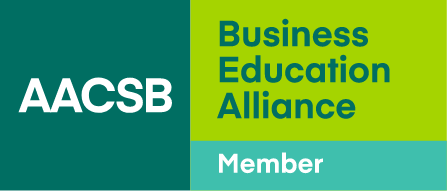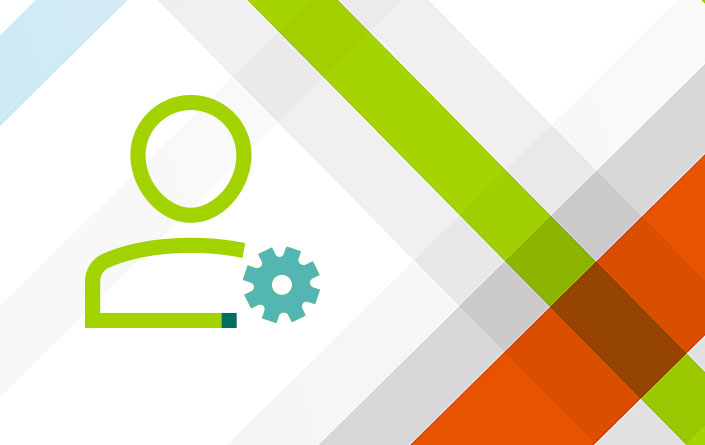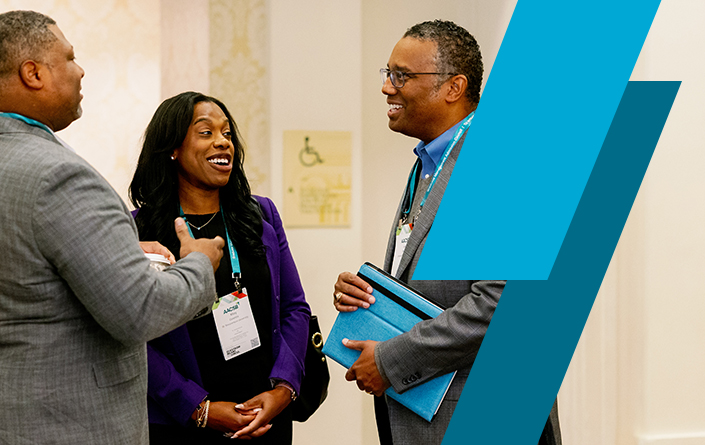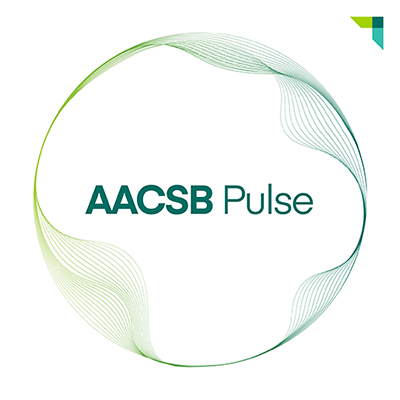Upgrading the Online Experience
- Through a Capability Maturity Model, a school does a 360-degree assessment of all aspects of student learning, from methodology to employer satisfaction.
- After conducting an assessment, a school might implement new platforms and new technology, as well as revamp the delivery of individual programs.
- Assessments often reveal that a school’s online courses should feature more defined topics, more detailed training materials, and shorter videos.
While virtual education has been around for more than 20 years, COVID-19 sparked a dramatic increase in the number of schools using online learning platforms. Even as restrictions abate and many of us return to a more normal way of life, it seems unlikely that student participation in online classrooms will fall back to pre-COVID levels.
In 2021, Leading Learning Partners Association (LLPA) published research showing that participation in online classes peaked at 90 percent during strict lockdowns, compared to about 10 percent before COVID. While student involvement has decreased by close to 70 percent in recent months, academic institutions anticipate that 25 percent to 40 percent of students will continue to participate in education through online and blended models.
At the beginning of the pandemic, few educational institutions had the necessary experience and technology to deliver high-quality education online. Unfortunately, more than two years later, many still are delivering suboptimal virtual learning. If at least 25 percent of students are going to be taking virtual classes through live, asynchronous, and blended formats, educational institutions need to establish standards for online learning.
One tool that schools can use to evaluate and improve their virtual learning platforms is a Capability Maturity Model (CMM). The CMM is a development model that was created in the 1980s by the U.S. Department of Defense to formalize and optimize any set of processes. An open and free educational version of the CMM has been developed by the Online Education Skills Institute (OESI), which was founded in 2020 by e-learning specialists to help organizations make the massive shift to online learning. Schools can use this model to understand what they should do to create the best possible virtual learning environments for their students.
Error Messages
First, it’s important to understand the common mistakes that many institutions make when they offer online education. The biggest one is attempting to teach virtual classes in the same way they teach in-person versions. Many educators and administrators do not understand that virtual studies require specific training materials, more detailed classroom preparation, shorter topics, and specific collaboration tools.
Another mistake schools make is overestimating their students’ readiness for online learning. In reality, students need help organizing their time and schedules, and most of them need technical training to understand how to navigate online platforms.
In fact, any time a school introduces a new learning platform or approach, it should provide training to all participants, including students, professors, and academic and technical staff. The school first could offer both on-campus and online presentations about how to use the new tool, then follow up those presentations with brief but detailed video recordings. Each video should demonstrate a certain function or action such as uploading an assessment or accessing video lectures.
Any time a school introduces a new learning platform or approach, it should provide training to students, professors, and academic and technical staff.
Later, the technical support team can help the professor create additional videos that expand on classroom information that students are having trouble understanding. In addition, the academic office, the technical support team, and even the professor can continue to assist students to help them adjust to online learning.
Assessment and Improvement
Business schools can use CMMs to determine where they can improve their online learning environments. Generally speaking, a CMM contains five maturity levels that describe the state of an organization’s processes:
- Level 1: unpredictable, poorly controlled, and reactive.
- Level 2: planned, documented, performed, monitored, and controlled at the project level.
- Level 3: well-characterized, well-understood, and proactive.
- Level 4: controlled through statistical and other quantitative techniques.
- Level 5: continually improved through incremental and innovative technological adjustments.
As a rule, an institution should aim to be at Level 3 or above. But when schools switched abruptly to online learning during the lockdowns, most found themselves at the initial, chaotic stage. While some have dramatically improved their delivery of virtual learning, others could benefit from a CMM analysis.
In a CMM assessment, a school seeks independent 360-degree feedback on all aspects of virtual learning. These include teaching methodology, teaching competency, quality and availability of study materials, student involvement, technical facilities, and qualifications of support staff.
The CMM also will evaluate whether graduates have mastered key professional skills and how satisfied students and their employers are with the training students have received. For instance, for schools to achieve Level 5 in employability and satisfaction, their graduates likely will need to be able to communicate effectively, know how to collaborate proficiently, and be committed to continuous learning.
In a CMM assessment, a school seeks 360-degree feedback on all aspects of virtual learning, from teaching methodology and competency to student involvement.
Once the feedback is gathered, a recognized expert in the subject area then processes the information and provides both a detailed conclusion and practical recommendations for improvement. Experts can be sourced from e-learning communities and conferences, such as LLPA, Microsoft Learning, EduTech, and others.
While a CMM can require a lot of effort, I have found that faculty and staff are encouraged when they realize the school is taking a fresh look at how to identify and implement improvements. I also have found that faculty and staff are motivated to improve when they know that other institutions have been successful in similar endeavors.
For that reason, it’s useful for schools to compare their current practices with the best practices of other institutions. In that way, administrators can learn how other schools are finding and implementing special technical tools such as virtual learning environment (VLE) platforms, communication platforms, video recording and processing software, microphones, and audio systems. Then they can choose systems that work for them.
One School’s Story
At GBSB Global Business School in Barcelona, Spain, we offered asynchronous learning options long before COVID hit. However, during the pandemic, we shifted to blended learning—including asynchronous studies as well as live online sessions—to meet the needs of on-campus students. We wanted to evaluate how well our virtual learning platforms were serving our students and how we could improve, so we turned to a CMM.
During the analysis, we investigated best practices in technology, which led us to make several improvements. We implemented a VLE based on Moodle, which offered a vast array of additional features, including forums for online discussions and assignments, access to an online library, and assessment processes for both group and individual projects. We also adopted Microsoft Teams as our communication platform, and Loom as our video recording software. This allowed us to improve our videos by implementing features from PowerPoint and Loom. Professors are free to select the best tools for the purposes of their courses.
A CMM analysis also led us to revamp specific online programs. For example, I deliver a course called Global Project Management for our MSc/MBA programs. In the beginning, the course offered students simple prerecorded video lectures and provided support and consultations through Microsoft Teams. During the first wave of pandemic lockdowns, this was a tough required course for students. After the CMM analysis, I was able to use additional features from Moodle, Teams, and Loom to improve the quality of my videos and the ease of online interactions.
By implementing continuous quality improvement measures aligned with our school’s goals, we have brought our school to a Level 4 of maturity in online education. I believe there are several reasons why we’ve attained this level.
When we shifted to blended learning during the pandemic, we wanted to evaluate how well our virtual learning platforms were serving our students and how we could improve.
First, GBSB Global has a highly collaborative environment. Our multichannel approach allows students and faculty to communicate via Moodle forums, Microsoft Teams chats and meetings, and email.
Second, the school provides strong organizational support to both students and professors. For instance, in the VLE, we have created a special “Faculty Corner,” which is an electronic base of knowledge that all faculty and staff can access 24/7. It contains documents about internal bylaws and regulations; instructions, templates, and examples; and videos that offer how-to instruction on topics such as preparing and uploading assignments.
Third, most students actively participate in online discussions and team-based projects because they understand they will benefit by receiving feedback from both professors and classmates. To motivate faculty to provide timely feedback, we evaluate them on how quickly they respond to students’ inquiries. But students also appreciate the chance to share knowledge and experience with their peers through discussions and team-based work. We are proud that some of our students even have decided to launch businesses together.
Areas for Adjustment
Schools that conduct CMM evaluations can reap benefits in two key areas:
Program redesign. CMMs can lead schools to significantly revamp their programs. One of the most important improvements is updating course structures so that topics are shorter and training materials are better visualized and more detailed.
A second common improvement is deploying video in a way that promotes learning. Professors often believe that better video resolution equals better education, but this isn’t true. Students often do not have access to high-speed internet, so it is difficult and inconvenient for them to watch or download large files, and high-end audio does not seriously impact the quality of their studies. Therefore, the technical quality of a video should be at a medium level. It’s much more important for videos to be short—10 to 30 minutes long—and full of well-visualized material.
Administrative changes. CMMs prompt administrative adjustments in three ways. First, deans, professors, and technical and marketing personnel often implement internal improvements while they’re preparing for the CMM audit. Second, an external audit provides the school with a broad, independent view of its strengths and weaknesses. Auditors can see the big picture of a school, compare it with best practices in the field, and provide recommendations. Finally, an evaluation through a CMM can contribute to a school’s brand improvement. Students are more likely to trust a brand that has been independently assessed.
By using a CMM to evaluate their online learning systems, schools can determine which elements of their platforms they need to advance and which elements they might need to simplify. They can identify both their strengths and their weaknesses as they undertake continuous improvements that will benefit both their institutions and their students.

